Module 3 - Benjamin-Mills
Module 3 - Benjamin-Mills
Module 3 - Benjamin-Mills
Create successful ePaper yourself
Turn your PDF publications into a flip-book with our unique Google optimized e-Paper software.
SS1.1<br />
HOW MUCH MANGANESE IS THERE IN A PAPER CLIP?<br />
solution from the beaker and funnel into the flask with distilled water and add<br />
further distilled water to bring the solution in the flask exactly up to the mark.<br />
5 Stopper the flask and shake it to ensure that the solution is uniform. All the<br />
manganese which was in your 0.2 g of paper clip is now in the purple<br />
solution as the manganate(VII) ion (MnO 4 – (aq)).<br />
Determining the concentration of a coloured solution<br />
You now need to find out the concentration of the purple solution so that you<br />
can calculate the amount of manganese originally in the paper clip.<br />
The concentration of a coloured solution can be found quickly and easily<br />
with a colorimeter.<br />
Figure 1 shows a simplified diagram of a colorimeter. A narrow beam of light<br />
passes through the solution under test and towards a sensitive photocell. In<br />
most colorimeters it is possible to select light in the most appropriate region by<br />
turning a knob to select a particular filter or to adjust a diffraction grating.<br />
e –<br />
narrow beam<br />
of light<br />
e –<br />
202<br />
filter or diffraction grating to<br />
select light of wavelengths<br />
absorbed by the solution<br />
solution<br />
under test<br />
The current generated in the photocell depends on the amount of light<br />
transmitted by the solution. This in turn depends on the concentration of the<br />
coloured solution under test. Normally the meter is calibrated to show the<br />
absorbance of the solution, rather than the light transmitted, because the<br />
absorbance is proportional to the concentration of the coloured substance in<br />
solution:<br />
absorbance µ concentration of coloured solution<br />
(You can read in Chemical Ideas 6.7 about why some solutions are coloured.)<br />
Designing your experiment<br />
6 Now plan your experiment. It will be helpful to discuss your ideas in pairs or<br />
small groups.<br />
You will need to produce a calibration graph by plotting the absorbance of<br />
potassium manganate(VII) solution (y-axis) against its concentration (x-axis).<br />
You will need about five or six points on your graph. The absorbance of the<br />
solution from the paper clip can then be measured and its concentration<br />
read off from the graph.<br />
Most steels contain less than 2% of manganese and a typical value for the<br />
steel used in a paper clip is about 0.3%. Use these figures to calculate the<br />
maximum mass of KMnO 4<br />
which could be present in 100 cm 3 of solution<br />
from your paper clip. Use 1.0 mol dm –3 sulphuric acid (CARE Irritant) to<br />
dissolve the potassium manganate(VII) (CARE Powerful oxidiser. Harmful<br />
and irritant. Avoid skin contact).<br />
Consider the following points:<br />
●<br />
●<br />
●<br />
●<br />
●<br />
What range of concentrations of solution will you need to enable you to<br />
plot a calibration curve?<br />
How many different concentrations will you need and what should they<br />
be?<br />
What is the most accurate way of making up these solutions? Remember,<br />
they will be very dilute.<br />
What apparatus will you need?<br />
Which chemicals?<br />
photocell<br />
„ Salters Advanced Chemistry 2000 – see Copyright restrictions<br />
sensitive meter<br />
Figure 1 Simplified diagram of a colorimeter



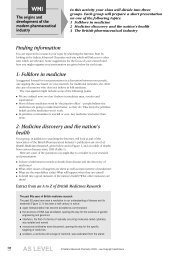
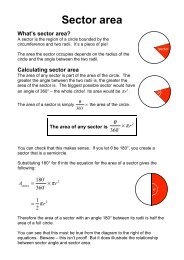
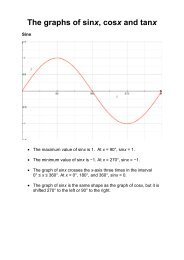
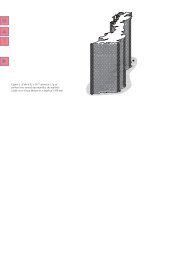

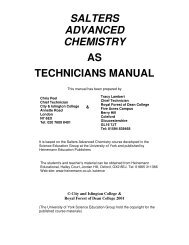



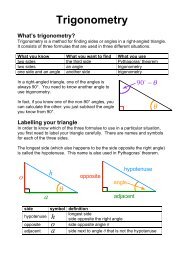
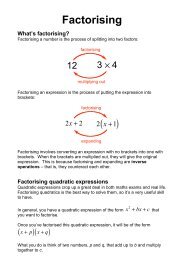
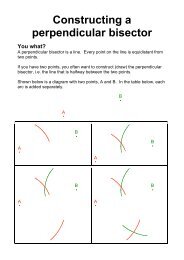

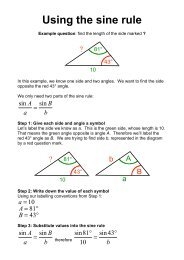
![ISI Web of Knowledge [v.4.10] - All Databases Results - Benjamin-Mills](https://img.yumpu.com/39253071/1/184x260/isi-web-of-knowledge-v410-all-databases-results-benjamin-mills.jpg?quality=85)